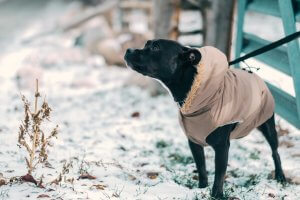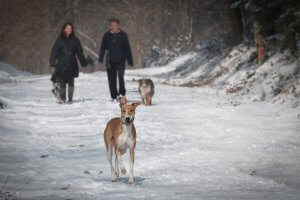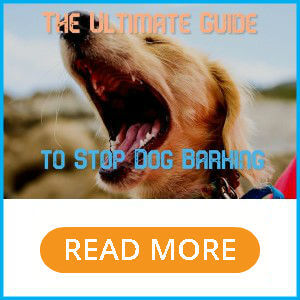Ready or not, Winter is here and that means all pet parents should be taking extra winter precautions to ensure their furry family members are safe and warm as the weather continues to change. At Release the Hounds we’re all about adventure with your dog, but we also want to remind pet parents to be proactive and cautious when treading through the winter snow with your pup. Here are some winter care tips for you and your dog!
1. Be aware of your dog’s limits and how sensitive they will be to the weather.
While it might seem like your dog is having the time of their life as they pounce through snowbanks, fetching snowballs and enjoying the fluffy-white-stuff, it’s also important to keep in mind their limits. Yes, even a dog with the thickest of coats will feel the affects of the freezing weather if left outside too long. Remember to always give your dog the option to come back inside, or bring them in for frequent breaks to ensure they have time to warm up. Remember that not every dog is as resilient to the cold as others, and dogs that were bred for life in warm climates will need extra attention to ensure their safety. Winter jackets and booties aren’t a fashion statement, they are a protective measure against the elements and can be a key resource depending on your dog’s breed, size and even age. These factors play a major part in determining if your dog can handle the weather. Toy breeds, small dogs, or fine-haired breeds such as poodles that require trimming may need to wear thermal clothing to withstand the cold chill of December through March. Talk to your vet about how much exposure your dog can handle and if your dog might need a little extra protection. It’s important to remember these extra layers should only be used when outdoors, and too much insulation indoors can lead to discomfort and overheating for your dog. Be aware of changing conditions and consider the length of time for each excursion when deciding how to prepare your dog. If your dog must be outside for extended hours, provide appropriate outdoor shelter that can shield them from getting wet from falling snow and provide insulation and protection from the wind. Better yet, give them a dog-door to come inside as they please.

2. Be cautious of salted pathways.
Ice melt or street salt that is used to melt sidewalks and pathways can be very dangerous to your dog if ingested or it can act as a corrosive irritant to your dog if it builds up under their paw pads and leave blisters and burns on their pads. Worse, if they lick their paws or ingest directly it could lead to vomiting or diarrhea. To keep your pup safe, be sure to avoid these areas and clean off their paws thoroughly when coming in from a walk. You should also keep your dog from eating snow, as the salt is easily spread and combined through runoff and foot traffic through an area. You can also consider boots, however, some dogs do not feel comfortable walking on a surface where their paw pad cannot touch the floor. For this reason, brands such as PawZ have provided a thin, waterproof layer that looks akin to a rubber glove so that your dog can still feel the surface below them. This is a trial and error process, and in the end, your dog may not be comfortable in boots. You can also try topical preventative protection such as Musher’s Secret which is an all-natural wax that is applied to their pads. However, our best recommendation is still regular attention and paw washing post-walk.
3. Be Attentive and Weary of Ice and Water
You’ve taken your pup to a new park and are enjoying the view of newly fallen snow while playing fetch. The ball bounces down a slope and as your dog goes to fetch it, they unknowingly stumble onto thin ice, hidden by a blanket of snow. This is a hazard that is often overlooked during the winter months. Be aware of your surroundings and keep your dog close when off-leash. A good off-leash area will have these hazards marked off, but often these hazards and signs can be hidden by layers of snow so it is up to you to be aware of the area. Even if the ice is strong enough to support their weight, they could slip or struggle to get traction which can lead to slip and tear injuries. It’s better to avoid ice and water with your dog during the winter months. If it is just above freezing and the waterway is still open, consider steering your dog away from swimming as they are still susceptible to hypothermia and drowning in freezing conditions.

4. Attend to Skin-Care Needs
Many dogs will develop dry, itchy skin during the winter months. Be attentive and bathe them to soothe their burning skin with pet-safe products. Look for products with natural, gentle ingredients, such as aloe or oatmeal which have been proven to improve skin condition for dogs. Dogs can develop a common skin condition known as hot spots, which are red areas that may be hot to touch, usually that have developed from moisture being trapped under their fur, allergic reactions or sometimes caused from excessive licking and boredom. Hot spots will be especially inflamed during the winter months so treat them with care and if necessary take your dog to the vet.
Stay warm everyone! Cheers from Release the Hounds!




